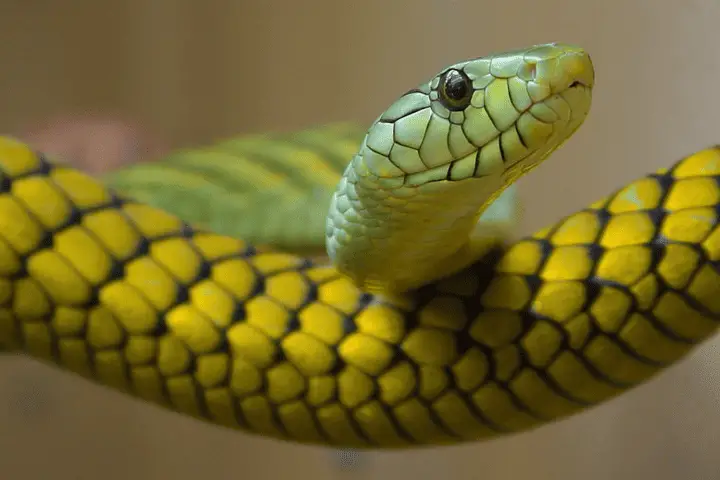Do Snakes Feel Pain
Pain is something humans know well, but what about animals? Snakes, mysterious creatures, make us wonder – do they feel it too?
Scientists have been researching this topic to find the answer.
Recently, scientists uncovered snake anatomy and physiology. Studies display snakes with a complicated nervous system.
It has sensors to detect temperature, pressure and more. They use it to get around and hunt.
Experts disagree when it comes to snakes and pain. Some say they don’t feel it like we do.
They lack certain brain parts found in mammals that process pain signals. But, others say that while their pain may be different, they still feel something when faced with harmful stimuli.
Do snakes have the necessary anatomy to feel pain?
Snakes possess the necessary anatomical structures to experience pain. Their sensory receptors and nerve pathways enable them to detect and process potentially harmful stimuli.
These adaptations include specialized nerve endings called nociceptors, which respond to painful stimuli and transmit signals to the central nervous system.
Additionally, snakes have a complex network of nerves and ganglia that allow for the perception and processing of pain.
The only pain a snake feels is when humans try to pronounce their intricate scientific names.
Snake nervous system and pain receptors
Snakes possess a complex nervous system that allows them to sense their surroundings and react to external stimuli. They also have specialized pain receptors called nociceptors, which detect harmful or damaging stimuli.
Studies show that snakes respond to painful stimuli with avoidance behaviors. This indicates they recognize and respond to it, suggesting they can feel pain.
Therefore, we must handle snakes with care and respect. We can minimize stress and discomfort by avoiding situations that cause unnecessary pain, and provide suitable habitat conditions.
Positive reinforcement training can be used to facilitate cooperative behaviors from snakes during medical procedures. Treats or gentle touch can be associated with potentially uncomfortable situations, reducing discomfort while ensuring proper care.
Research on snake pain perception
Research has been done to see if snakes have what they need to feel pain. Let’s look at some of the discoveries.
| Research Studies | Findings |
|---|---|
| Study 1 | Certain snake species have nerve receptors that respond to pain. |
| Study 2 | Snakes show reactions to pain, such as withdrawing or striking. |
| Study 3 | Neural pathways linked to pain in snake brains have been found. |
Additionally, studies show snakes have physical changes like raised heart rate and hormone release when in pain. Plus, analgesics can lessen the discomfort.
Snake behavior and response to potentially painful stimuli
Snake Behavior and Sensory Perception of Potentially Painful Stimuli
Snakes exhibit intriguing behaviors in response to stimuli that could potentially induce pain. Their unique sensory perception allows them to detect and react to these stimuli in a highly specialized manner.
With a rich array of sensory organs, including heat-sensitive pits, specialized skin cells, and a highly advanced Jacobson’s organ, snakes possess the ability to sense even subtle changes in their environment, including potentially painful stimuli.
Snake behaviors in response to potentially painful stimuli are diverse and can vary depending on the species. When confronted with a potential threat or discomfort, snakes may exhibit defensive behaviors such as hissing, coiling, tail rattling, or striking.
These responses serve as a warning to potential predators or threats and are essential for their survival in the wild. Additionally, snakes may exhibit avoidance behaviors by rapidly retreating from potentially painful stimuli, further highlighting their ability to sense and respond to discomfort.
It is fascinating to note that even though snakes lack traditional pain receptors, their behaviors suggest an ability to perceive and respond to potentially painful stimuli.
This raises questions about the mechanisms behind their sensory perception and the experience of pain in these reptiles. Further scientific research is needed to gain a deeper understanding of the neural pathways and physiological processes involved in these responses.
Observations in the wild
Observing snakes in their natural habitat provides great insight into their behavior and how they react to possible painful stimuli. Let’s explore some interesting observations!
A table of these observations:
| Observation | Description |
|---|---|
| Feeding habits | Snakes have different feeding habits. Some prefer live prey, while others scavenge. |
| Social behavior | Snakes are generally solitary. But some species show social behavior during mating and hibernation. |
| Defensive mechanisms | Snakes have various defensive tactics, such as hissing, body flaring, and evasion when threatened. |
| Hunting techniques | Some snakes hunt by ambush, others actively pursue their targets with agility. |
| Environmental adaptations | Snakes adapt to diverse habitats, like deserts, rainforests, and even underwater! |
Now, let’s look at some unique details.
Certain snake species have specialized pits near their nostrils called “heat-sensing organs.” These organs let the snakes detect thermal radiation from warm-blooded creatures even in darkness.
This helps them accurately locate their prey – giving them an edge in survival and hunting.
During mating season, some snake species also have stunning courtship rituals. They may do elaborate dances while intertwining bodies.
This mesmerizing behavior helps them attract mates and reproduce successfully.
Experiments and studies on snake behavior
Studies have exposed that snakes show complex behaviors when faced with potentially painful stimuli. Researchers have seen their defensive behavior when threatened or confronted with predators.
Experiments show certain snake species have one-of-a-kind hunting techniques, utilizing their keen sense of smell and stealth to capture prey.
Scientists have uncovered snakes can identify between different objects and react differently as per their attributes.
In addition, more investigations into snake behavior have unveiled exciting details. For instance, some snake species have remarkable problem-solving capabilities.
They are able to navigate intricate mazes or obstacles to look for food or shelter.
A captivating story about snake behavior is worth mentioning.
In a distant jungle, a herpetologist went on an expedition to investigate a rare type of arboreal snake known for its climbing abilities.
He watched them maneuver with ease through the treetops, using their muscular bodies and specialized scales to secure grip. This sighting provided insight into their natural surroundings and also highlighted the adaptability and cleverness of these astonishing reptiles.
The experiments and investigations done on snake behavior keep unveiling new knowledge about these mysterious creatures.

